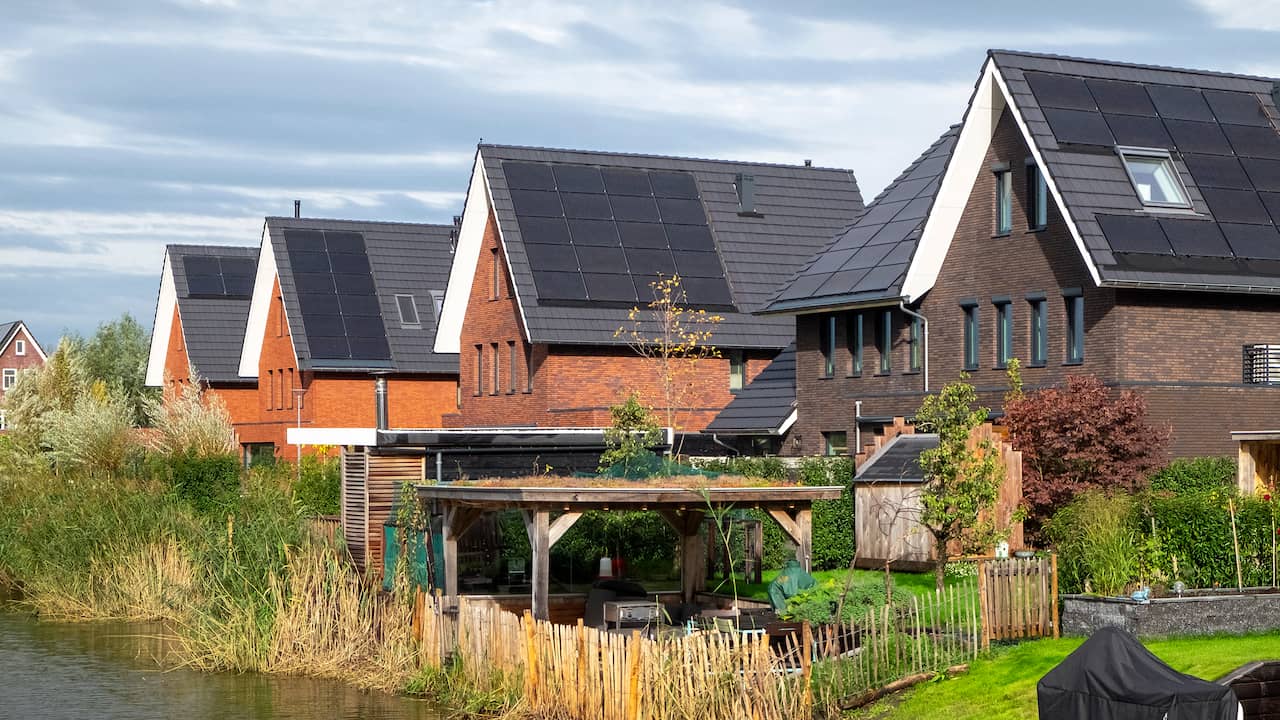It can be called a small miracle: the Netherlands is a world leader in solar energy. It is a headache for network operators, but we as a country are also reaping more and more benefits. Less gas is needed and with solar panels on the roof the energy bill is much lower. That’s why the growth is far from over, thinks energy expert Thijs ten Brinck. “Each additional panel saves 40 cubic meters of gas.”
For a long time, solar energy seemed to be a marginal source of energy. But if exponential growth goes on long enough, it ‘suddenly’ reaches a large scale. That point appears to have been reached last summer. With a new record for solar energy, the European Union has prevented 29 billion euros of gas imports. This is demonstrated by a research by the international think tank on energy Embers.
With no less than 23% of energy demand, the Netherlands was the first in the EU this summer, followed by Germany and Italy. Expressed in the amount of solar energy generated per inhabitant, the Netherlands is also the world leader since 2021, above Australia.
We owe the Dutch solar success, among other things, to the “compensation scheme,” Ten Brinck told NU.nl. Solar panel owners get a portion of the energy tax paid by them. This makes buying solar panels on your own attractive.
Then it was 2022 and the price of gas increased tenfold. In response, energy is saved, coal-fired power plants are back to full capacity, and the ambition for wind power in the North Sea has been heightened. Can solar energy help us even more if the gas crisis lasts a long time?
A fivefold increase every four years: enough room for now
Between 2017 and 2021, the total number of solar panels in the Netherlands increased by around 50% every year. If we kept that pace, solar panels would cover more than 100 percent of (current) electricity needs in the summer in four years.
Ten Brinck believes continuing rapid growth is technically possible. “Space is not a problem. Much of the roof area in the Netherlands is still unused. For example, a large number of solar panels can also be placed above parking lots.”
According to Ten Brinck, what is a bottleneck is the number of installers. As the annual number of new panels continues to increase each year, the need for manpower also continues to increase. So the best way to promote the growth of solar energy in the Netherlands is to train more installers, thinks Ten Brinck. “Or bring easier-to-install panels to the market.”
Each additional solar panel lowers the national energy bill
Would further growth also help to further reduce dependence on natural gas? If you have solar panels and electric heating, you no longer need gas. But every grid connected panel also helps reduce national gas consumption, says Ten Brinck, because much of our electricity still comes from gas-fired power plants.
“A solar panel in the Netherlands provides about 250 kilowatt hours of electricity per year. Producing the same 250 kilowatt hours in a gas-fired power plant costs about 40 cubic meters of natural gas. Assuming that solar energy primarily replaces electricity from gas. – powered power plants, each solar panel we install more saves 40 cubic meters per year. gas. “
To put it into perspective: In 2021, Dutch gas-fired power plants were still burning 7.5 billion cubic meters of natural gas. This would require ten panels per Dutch person to generate the same amount of electricity from sunlight.
It probably won’t come to that. Wind farms in the North Sea are becoming the main source of electricity and the demand for gas is currently falling due to energy savings. But solar energy is also making an important contribution in the Netherlands and is increasing every year.
–


